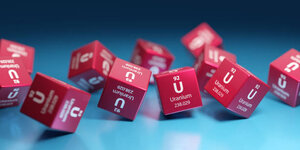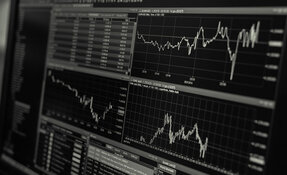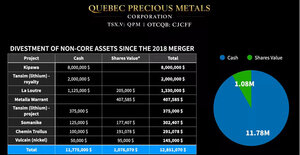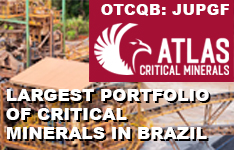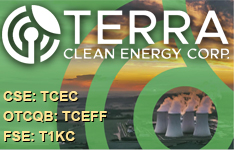Jon Hykawy: There really isn't as far as batteries go. You can produce batteries that contain nickel-metal-hydrides. You can produce batteries that contain lead and acid. You can produce batteries made from alkaline materials. But they're not lithium-ion batteries at that point. If you want to produce something with high voltage, high specific energy and high power output, you need to use lithium. There really isn't another option.
TGR: And those are the main advantages of lithium-based batteries: high voltage and the fact that they maintain their power for a longer period of time.
JH: That's what makes them attractive to the automotive market. There was a documentary made a few years ago entitled, Who Killed The Electric Car? Electric cars failed previously not because anybody went out and made a concerted effort to bump off the electric car. The technology just wasn't there at the time. Now, you need only look at a Nissan LEAF. I've driven one. It's an extremely good car. It's not a good electric car. It's a good car. . .period.
TGR: And for the LEAF and other cars like it, carmakers are looking at powering them with lithium-vanadium batteries. You talked about those at the Forbes & Manhattan Conference in November. Where are lithium-vanadium batteries at now?
JH: A number of companies are doing commercial work on them. China's BYD Company Ltd. (OTCBB:BYDDF) and Valence Technology Inc. (NASDAQ:VLNC) in the U.S. are some examples. Subaru has been doing work on an automotive version for a significant period of time now. The real advantage that lithium-vanadium batteries have over lithium-cobalt batteries, the standard sort of chemistry you have in your laptop, is that lithium-vanadium batteries are very, very good at producing power and producing it safely. The typical battery that's in the Chevrolet Volt or the Nissan LEAF is a manganese-oxide battery and those are inherently safe, as well. You don't have the problem of these batteries catching fire that you had with some of the older chemistries.
TGR: So what is the problem?
JH: Where you have a problem with the batteries in the Volt or Leaf is with power production. They're lower-voltage batteries. They're around 3.2 or 3.3 volts, and they're what are called '10C' batteries. An amp hour-rated battery can kick out 10 amps or charge at 10 amps all day and night without overheating or becoming damaged. At 10 amps of current and 3.2 or 3.3 volts, you're looking at a 33-watt cell. That's a reasonable amount of power, but it's not outrageous.
If you look at a lithium-vanadium phosphate battery, it's a 4.2-volt cell, but the battery itself is a 50C battery. That means the same amp hour-rated battery can kick out 50 amps of current for as long as it lasts. The advantage here is that it's 50 amps of current times 4.2 volts. That's 210 watts of power as opposed to 33 watts.
You've got a lithium-ion battery in both cases, but because of the addition of vanadium to the cathode in that battery, you've got something that can produce more than six times the power. Obviously, power is important and the most important thing in a hybrid car application. It's important in terms of being able to charge the battery more quickly and get the driver back on to the road more quickly. But it's also important to power utilities. A lot of utilities are looking to use lithium batteries as a backup to some of their substations during peak periods. They want a battery that produces power inexpensively. Frankly, lithium-vanadium batteries at six times the power rating of some of their automotive cousins are a very inexpensive method of producing power.
TGR: Producing power or storing power?
JH: Well, storing it and then kicking it out when the utility demands it.
TGR: And that's increasingly becoming an issue. There really isn't a mass storage device that allows utilities to do that cost effectively at this point.
JH: Many utilities need to produce power to meet peak demand more than they need to output more electrical energy. They produce more than enough energy over the course of a day. The problem is that nobody really wants that energy at night, they want it within a few hours of the day when the air conditioning is running and the lights and computers are all on. It's a peak-power issue. But there is a technology that actually uses vanadium; it's called a vanadium-redox battery.
The storage medium in that cell is vanadium pentoxide dissolved in sulfuric acid, which effectively allows you to store industrial levels of energy. The largest vanadium-redox batteries out there are at megawatt levels, or millions of watts, power output. And they can output those millions of watts for hours at a time. They're very long-life batteries. They're deployed in a number of locations worldwide, but a number of them have been in service for years and, frankly, have not seen any significant degradation in their capabilities.
TGR: Is the advent of this energy storage technology affecting vanadium demand or is demand still mostly about the ebbs and flows of the global steel market?
JH: Most of the vanadium that's produced goes into steel or other metals as a hardening agent, but it is now being used not only in lithium batteries on the automotive side but also in standalone batteries for the utility industry. But these standalone batteries are still at an early stage. Power utilities are generally very conservative, so they're not going to do adopt new technology en masse without large amounts of test data behind it. But we're starting to get to that level of testing. There's a significant opportunity here to see vanadium demand ramp up and not just because of the recovering global steel industry.
TGR: Tell us about some promising vanadium projects that are in the development phase.
JH: We're looking at two in particular. One is Largo Resources Ltd. (TSX.V:LGO). Largo has a number of projects in Brazil. They recently partnered with a Brazilian group called Vinci Partners to develop those projects, particularly the Maracas Vanadium Project. Largo is now fully financed to go into production at Maracas and it's something that hasn't really been recognized by the market.
The other project is smaller but could be very promising in terms of the cost of production. That's a project that belongs to American Vanadium Corp. (TSX.V:AVC), formerly Rocky Mountain Resources Corp., in the western United States. It's not a big project, though it certainly has been growing recently with some of the work being done there, but it's potentially one of the lower-cost producers. We feel it's important to buy into some of the lower-cost producers when it comes to an industrial metal like vanadium. It does you no good to buy a high-cost producer only to find that they're out of business in two or three years
TGR: Have you visited either Largo or American Vanadium's projects?
JH: I have visited several projects belonging to Largo. I have not had the chance to visit American Vanadium yet but I plan to.
TGR: What were your thoughts after your visit to Largo's flagship Maracas project in Brazil?
JH: Maracas is one of the most obvious mines that you're ever going to see. It's a good, straightforward project. The vanadium is effectively contained in iron ore in magnetite. It's very easy to just grind that and magnetically separate it from the other materials. The contaminants effectively just fall out at that point and you're left with very good material for processing. Les Ford, who is working with them on Maracas, is one of the best minds in the business. He basically looks at it and says there's no issue with it becoming a mine. I give him full credit on that because he's been involved with most of the vanadium projects worldwide for the last 20 years. We like Maracas a lot and we think Largo is one of the better names out there.
TGR: You also mentioned American Vanadium. It owns the Gibellini Project in Nevada, which has a NI 43-101 resource estimate. When you look through that technical report, what are some things that come to mind?
JH: The first thing is we expect it to grow. It's a relatively small vanadium deposit at this point, but there's more material in the area. It's also weathered and shallow. Those two things together can help keep the costs down and help that project develop relatively quickly. And American Vanadium has good state government support to get that project up and running. American Vanadium is also interested in doing more with it than working for the steel industry. It will be interesting to see how they roll out into some of these energy storage applications over time.
TGR: What's your outlook on vanadium in the near term?
JH: Well, we're bullish. The global economic recovery is going to be good for steel. If it's good to steel, it's going to be especially good to high-strength steel and that really cries out to vanadium. We're positive on the overall vanadium space, independent of energy storage. But we think energy storage is a completely overlooked demand driver for vanadium. So, we're looking forward to seeing significant growth in that area as well.
TGR: Jon, thanks for your time, as always. Much appreciated.
Jon Hykawy is currently with the research team at Byron Capital Markets, with a specialized focus in the lithium and clean technology/alternative energy industries. Jon holds both a PhD in physics and an MBA from Queen's University and has been working in capital markets as a clean technologies/alternative energy analyst for the last four years. He began his career in the investment industry in 2000, originally working as a technology analyst. His current area of focus is the lithium sector, ranging from availability and production to lithium battery technology. He has extensive experience in the solar, wind and battery industries, conducting significant research in the areas of rechargeable batteries—ranging from rechargeable alkaline to lithium-ion to flow batteries.
Want to read more exclusive Gold Report interviews like this? Sign up for our free e-newsletter, and you'll learn when new articles have been published. To see a list of recent interviews with industry analysts and commentators, visit our Expert Insights page.
DISCLOSURE:
1) Brian Sylvester of The Gold Report conducted this interview. He personally and/or his family own shares of the following companies mentioned in this interview: None.
2) The following companies mentioned in the interview are sponsors of The Gold Report: Largo Resources and American Vanadium.
3) Jon Hykawy: I personally and/or my family own shares of the following companies mentioned in this interview: None. I personally and/or my family am paid by the following companies mentioned in this interview: None.



